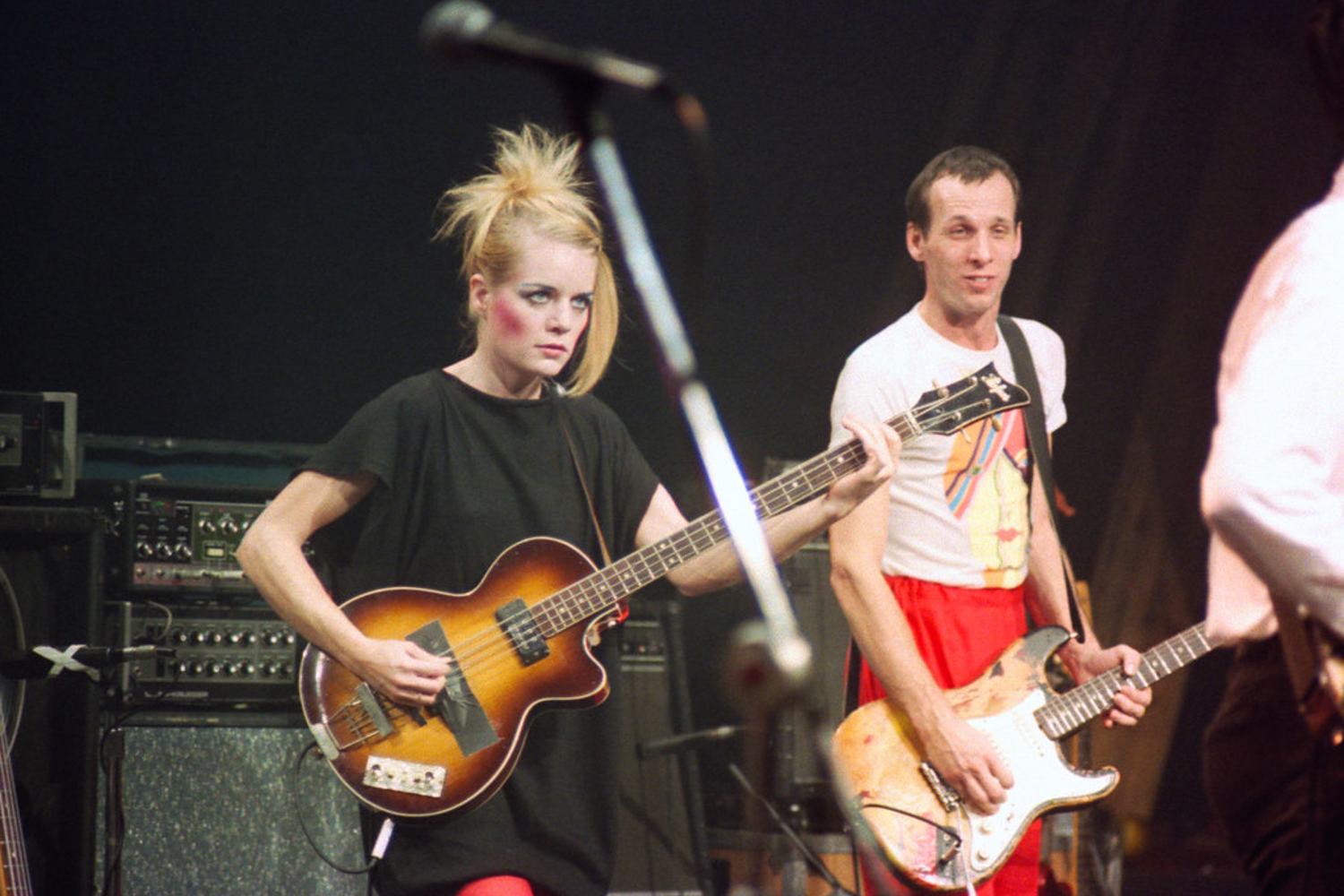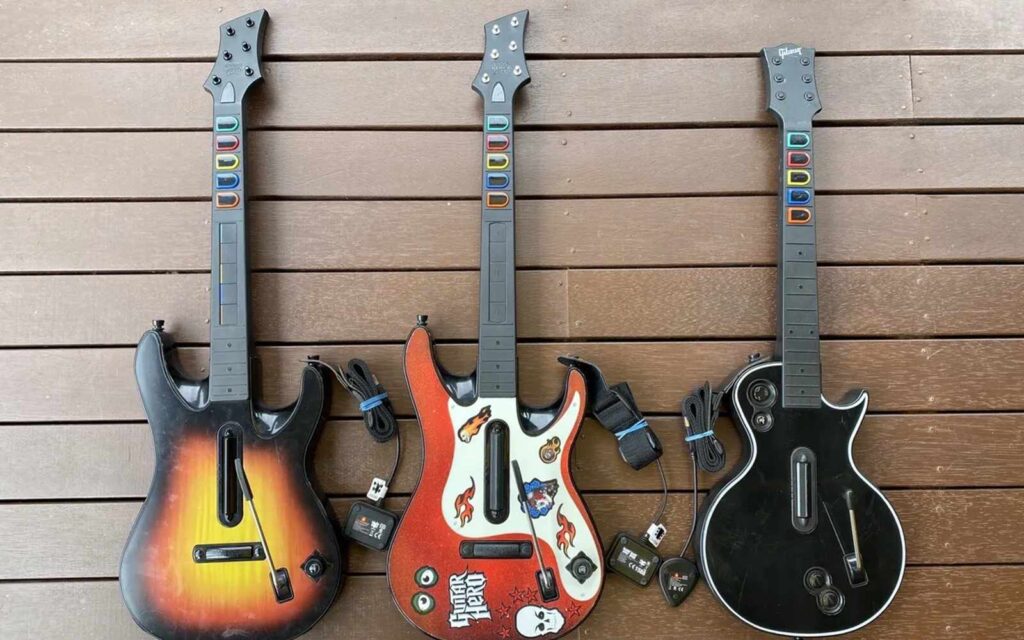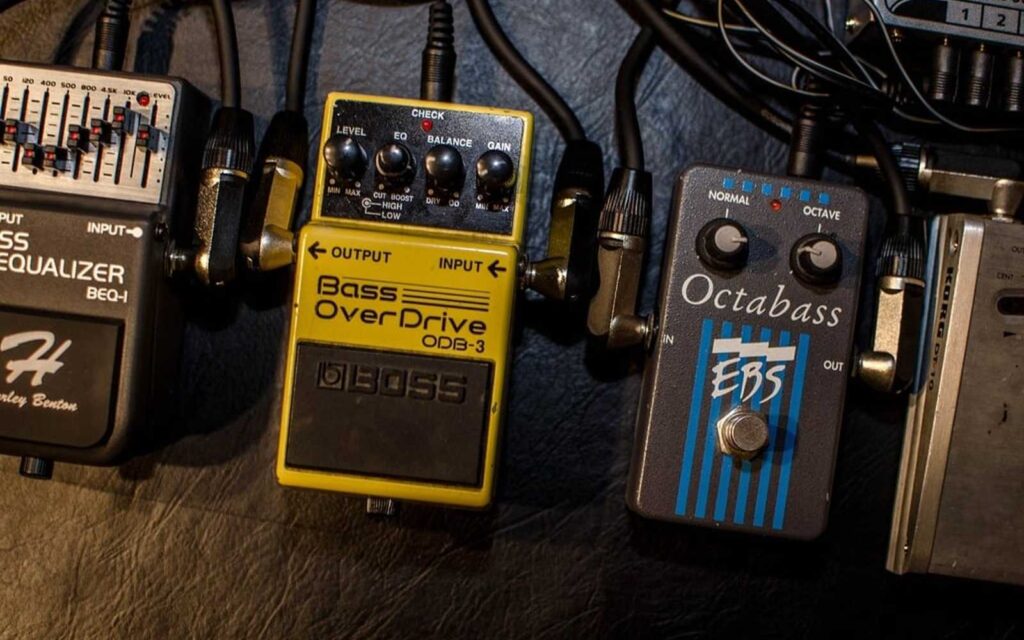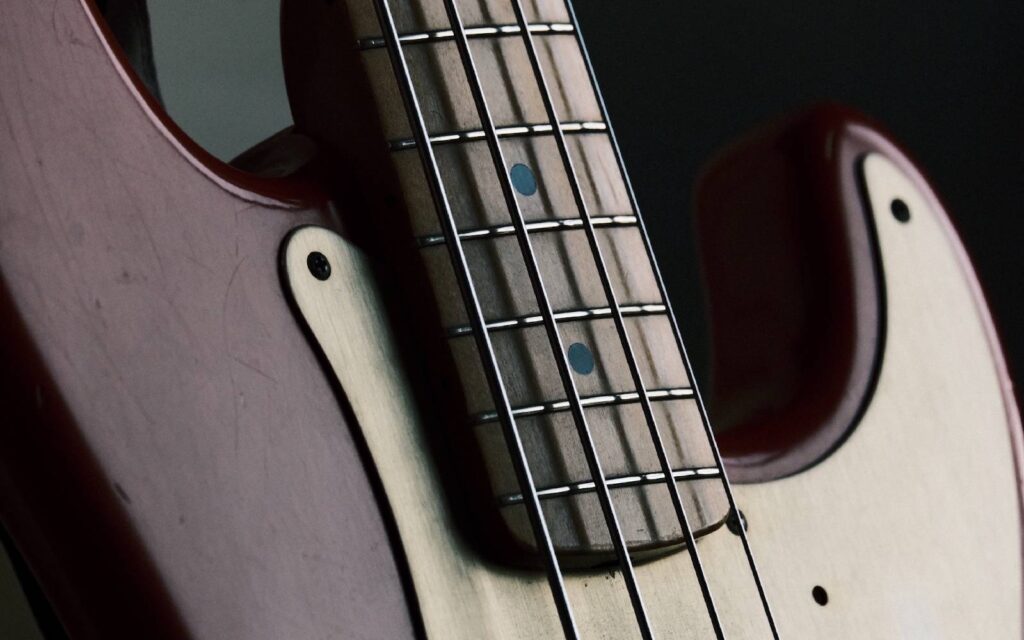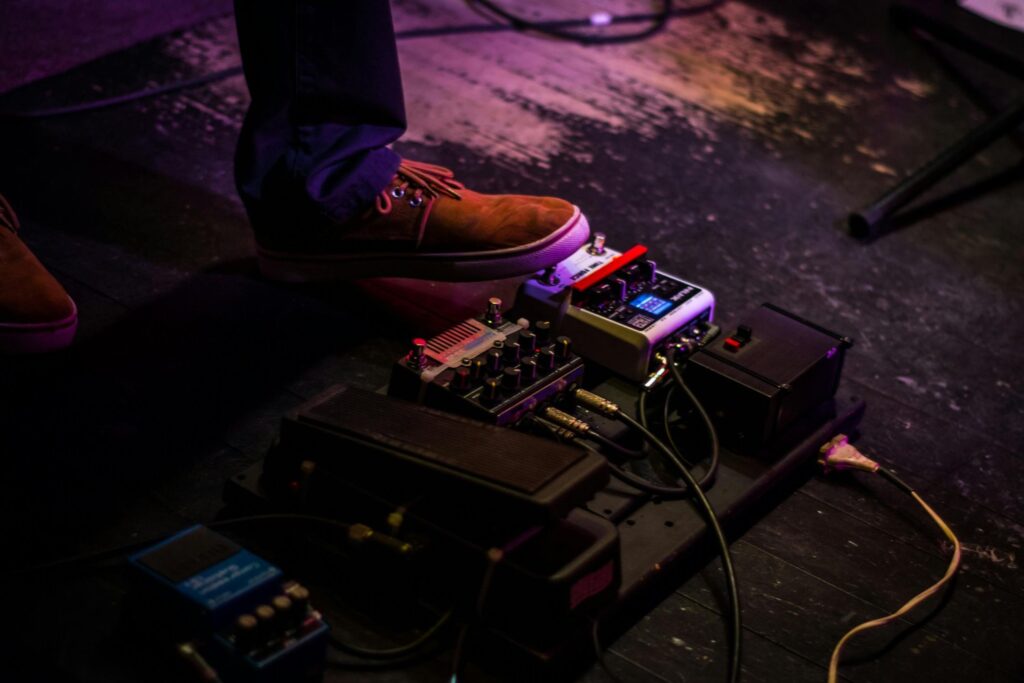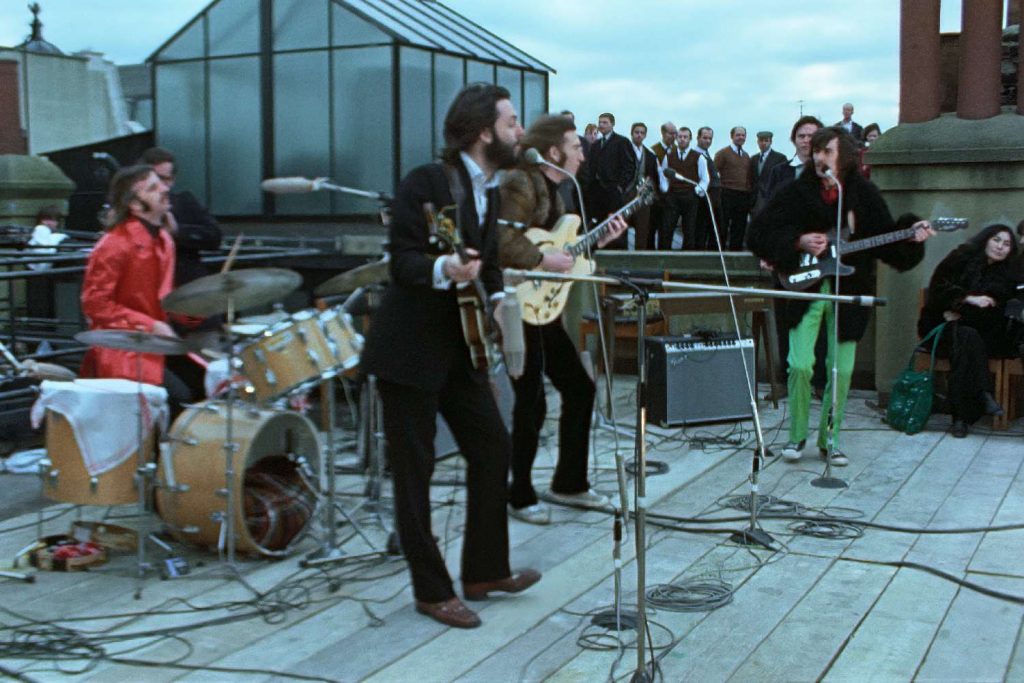A band is only as good as its bassist is - that's a fact.
Of course, guitarists will always steal the spotlight, and we’ve always got time for a good drummer, but any worthwhile musician understands that the bass guitar is the true dealbreaker in what makes a musical group go down in history.
Today, we’re turning our gaze to those four-string heroes who’ve held it down in some of the most seminal bands in the indie canon. It’s hard to define exactly what constitutes an ‘indie’ bassist, so we’re not going to try and draw any distinctions here – rather, we’re analysing the techniques and influence of the most important players of the modern age to gather a snapshot of the past, present and future of bass playing as a whole.
Read up on all the latest features and columns here.
So, without much further ado: our top ten innovative indie bassists of all time.
10. Martyn P. Casey (Nick Cave and the Bad Seeds, The Triffids, Grinderman)
Fender Precision Bass Guitar
Best Basslines: ‘Red Right Hand’ (1994), ‘Do You Love Me?’ (1994), ‘Stagger Lee’ (1996)
In his own words: “I was back in Perth, working at a petrol station, pumping gas, checking the oil and tyres – and I got a call from Mick Harvey, he was playing bass in the Bad Seeds but they’d just done The Good Son album, which required a lot of extra instruments that Mick wanted to do – xylophones and extra keyboards and what have you. So I ended up joining and next thing I knew I was in Berlin with The Bad Seeds.”
British-born Melburnian Martyn P. Casey is one of the unsung heroes of the Australian music scene. Formerly a member of alternative rock outfit The Triffids, he went on to join Nick Cave and the Bad Seeds in 1990, a year after The Triffids announced what was intended to be a temporary hiatus.
While his bass parts with the Perth post-punkers are nothing to scoff at, it’s with the Bad Seeds that Casey developed his minimalistic yet pivotal bass form.
His playing on the Bad Seeds’ 1994 classic ‘Red Right Hand’ is simple albeit effective, with a rolling bassline that serves as the ideal bedrock for all the bells and whistles (literally) superimposed by the mad genius that is Nick Cave. On the menacing ‘Stagger Lee’, Casey supplies a subtle, descending bassline, whilst Conway Savage attempts to break every hammer and string on his piano with some thumping chords.
Compared to his contemporaries, Casey is a man of few notes – notwithstanding, his bass playing is the compass that guides these songs in the right direction, and his contribution to the Bad Seeds’ canon is nothing short of immense.
9. Kim Deal (Pixies / The Breeders)
Fender Precision Bass Guitar
Best Basslines: ‘Monkey Gone To Heaven’ (1989), ‘Here Comes Your Man’ (1989), ‘Debaser’ (1989)
In her own words: “I didn’t like going with the kick drum. There are songs I do that with, but they don’t irritate me like the bar bands [that do it], even when it’s supposed to be a rocking number. I knew I didn’t want to do whatever that was.”
Kim Deal only spent four years with the Pixies in her initial stint, but appeared on some of their most memorable albums, including Surfer Rosa (1988) and Doolittle (1989). Her playing, particularly on the latter record, is the perfect provision of rhythm and melody as a bassist.
Rhythmically, Deal departs from the customary locking-in with the drums, and often opts for straight eighth-note patterns that serve to drive the music. The chorus on ‘Monkey Gone To Heaven’ showcases this to a tee. Throughout the verses, her bass gels superbly with the gritty cello section, and is arguably some of her best playing on the album.
‘Here Comes Your Man’ is a classic example of Deal’s melodic aptitude: at certain points she syncs up with Black Francis’ emphatic guitar riff, adding some fullness to the mix. Throughout the verses, she sets up a nifty countermelody underneath Francis’ catchy vocal line.
While Deal’s post-Pixies career predominantly revolved around the guitar, her maverick approach to the four string has undoubtedly influenced countless of aspiring indie bassists since.
8. Norman Cook (The Housemartins)
Fender Precision Bass Guitar
Best Basslines: ‘The People Who Grinned Themselves To Death’ (1987), ‘Build’ (1987), ‘I Smell Winter’ (1986)
In his own words: “It only took me about a week-ish to learn the bass. But what I was doing all the time before that was DJ-ing. But in those days, DJ-ing was a hobby, not a profession, because DJs didn’t get paid. We just got free beer.”
Most of us probably know Norman Cook by his stage name Fatboy Slim. However, here’s something you likely didn’t know: prior to his career as one of the pioneers of Big Beat, Cook was a member of The Housemartins – one of the most intriguing bands of the ‘80s UK indie scene.
Singer Paul Heaton’s distinctive voice and religious lyrics gave the band a unique “nostril-gospel” aura, filled with catchy tunes and grooves. The group was only around for five years, and amicably disbanded as a result of musical differences between Cook and Heaton.
Cook’s grooves with The Housemartins were by no means a masterclass in technical proficiency – his skill, however, lay within his harmonically innovative style of bass playing. Cook would often avoid playing the root note in a chord, instead opting for the third or fifth in order to provide a more ambiguous angle to the music.
His sublime bass parts on ‘The People Who Grinned Themselves To Death’ and ‘Build’ show Cook’s willingness to tackle the bass from a totally different harmonic perspective, whilst still maintaining a sense of tactful melodicism. Not many bassists adhered to this unorthodox approach, but Cook made it work extremely well within the context of The Housemartins’ upbeat indie pop singles.
7. Nick O’Malley (Arctic Monkeys)
Fender Precision Bass Guitar
Best Basslines: ‘The Hell Spangled Shalalala’ (2011), ‘Cornerstone’ (2009), ‘Balaclava’ (2007)
In his own words: “I never liked being the exact centre of attention. I like being just next to it. That’s probably why I like playing bass so much.”
Nick O’Malley joined the Sheffield band in 2007 as a temporary (then eventually permanent) replacement for Andy Nicholson, who helped form the group and contributed immensely to their seminal debut LP the year prior.
O’Malley’s basslines on Favourite Worst Nightmare are crucial to the colossal sound of the album; songs such as ‘Balaclava’ illustrate his ability to provide a sense of symmetry to Jamie Cook’s rumbling guitar layers, alongside Matt Helders’ industrious drumwork.
O’Malley’s bass playing finds itself, at times, in the foreground: on tunes like ‘The Hell Spangled Shalalala’, he plays a wicked countermelody that cleverly snakes around Jamie Cook’s sturdy guitar track. In other instances, he plays more of a supporting role: ‘Cornerstone’ taught me a great deal as a bassist about the importance of playing for the song.
O’Malley’s subtle use of slides, syncopation and counterpoint do wonders to complement the sea of psychedelic guitar tones that comprise this pearl of a track. It’s this ability to spot which part best suits a song that is testament to O’Malley’s craftsmanship as a bassist.
6. Alex James (Blur)
Fender Precision Bass Guitar, MusicMan StingRay Bass Guitar
Best Basslines: ‘The Universal’ (1995), ‘Girls and Boys’ (1994), ‘Ghost Ship’ (2015)
In his own words: “It’s such a precious thing we have, this ability to make music together, that’s been there since our very first rehearsal. We wrote our first single in that rehearsal; it’s a highly honed relationship. You don’t really get bands now. It’s all solo artists with session musicians.”
It’s easy to deride Blur as being a tad contrived and dated, and to an extent, this is probably justified. However, let’s put all that aside for a second and acknowledge that behind the brazen façade lay three (sorry Drummer Dave) very gifted musicians who penned some formidable tracks.
A vital component of the Britpoppers’ sound was bassist Alex James – sporting baggy shorts and usually seen with a cigarette dangling from his lips, James laid down some of the most creative and technically demanding basslines of the ‘90s.
One of James’ defining attributes is his knack for creating a song within a song: something Christopher Nolan would certainly be proud of. His playing on the quasi-symphonic ‘The Universal’ showcases this, whereby James’ exquisite bass part is almost as hummable as the song itself.
Dare I say that playing through his serrated bassline on ‘Girls and Boys’ is the indie bassist’s equivalent of climbing Everest – if you can get through unscathed, you’ve pretty much succeeded. ‘Ghost Ship’ shows James at his grooviest, with his boomy tones supplying the ideal foundation upon which the guitars, horns and vocals can laze.
5. Nikolai Fraiture (The Strokes)
Fender Jazz Bass Guitar
Best Basslines: ‘Is This It?’ (2001), ‘Razorblade’ (2006), ‘Machu Picchu’ (2011)
In his own words: “Playing live with a drummer beats any other process. You can hear that in the music and the feeling and the tone. Having other people in the room is essential to creating something that is living and breathing. The pinnacle of drum and bass parts, for me, is getting a groove from unconventional beats.”
Alex Turner recently crooned “I just wanted to be one of The Strokes…” – although it’s unlikely bassist Nikolai Fraiture would’ve been Alex’s first pick, he’d certainly be mine. Fraiture is, quite simply, one of the most inimitable musicians to have ever picked up the instrument, for a number of reasons.
For starters, it takes some serious balls to go against the grain and play a Jazz Bass in an indie rock band. The reasons for this become apparent once you unravel the essence of his basslines, and the functions they serve within the music.
If you were to listen to the entire Strokes discography from start to end, it would take no longer than two and a half minutes to realise that Fraiture is simply something else. The first track – ‘Is This It?’ – off their debut LP of the same name, reveals the bassist’s ingenious ability to weave an unconventional yet melodic groove over a fairly standard drum beat.
The warm tone of his Jazz Bass propels this deft countermelody to the fore, and ultimately stands out as some of the most tasteful playing put to record over the past two decades. On ‘Machu Picchu’, Fraiture keeps a rather peculiar groove afloat with some sporadic 16th notes, before imparting his more melodic side in the chorus.
4. Mike Mills (R.E.M.)
Rickenbacker 4001 (early) Fender Precision (later)
Best Basslines: ‘Radio Free Europe’ (1981), ‘Orange Crush’ (1988), ‘Losing My Religion’ (1991)
In his own words: “You want to be grateful and graceful about your success, and at the same time not let it go to your heads. That was one of the reasons we never moved to NYC. Staying in Georgia helped us keep our feet on the ground. When you’re on tour or in the big city, people know you and want to talk to you. Then you go home and your friends know you and tell you what a dumbass you are. It kinda brings you back down to earth.”
The first time I ever heard R.E.M., I remember comparing Michael Stipe’s vocals to hearing my grandfather crap on after he’s had one too many Johnnie Walker Reds: largely nonsensical, self-absorbed and wearisome.
But as I listened more, I realised it was all part of the charm that made R.E.M. the ultimate outliers – even by indie rock standards. The band’s musical aesthetic is the epitome of DIY, and to this day I struggle to find any other group that sounds even remotely similar to the American alt-rock pioneers.
Mike Mills’ bass playing is one of the main catalysts that sets R.E.M. miles apart from their predecessors and contemporaries. Their 1981 debut single ‘Radio Free Europe’ is a blistering introduction to the world of R.E.M., with Mills’ low-end frequencies being a vital ingredient in the mix. Throughout the verse, he keeps things moving with a pulsating eighth note rhythm.
Once the chorus hits, Mills gives us a sweeping countermelody that has more peaks and troughs than the stock market chart. His crunching P-Bass on ‘Orange Crush’ provides that much-needed spine, while his contribution to the band’s most famous track, ‘Losing My Religion’, again shows Mills’ innovative, scale-based approach to crafting the perfect indie bassline.
3. Tina Weymouth (Talking Heads)
Hofner 500/2 Club Bass, Fender Musicmaster & Mustang Bass Guitars
Best Basslines: ‘Psycho Killer’ (1977), ‘Cities’ (1979), ‘Found A Job’ (1978)
In her own words: “[The band] were looking for a singer, and they didn’t find a singer, so David sang. And they couldn’t find a bass player, so as I was living with them, I began to play bass. It was Chris who encouraged it, actually. Otherwise, I was never encouraged. In fact when we first started playing clubs like CBGBs, pretty much the reaction to a female bassist was like it’s a trained monkey doing it.”
It’s impossible to even fathom the amount of sexist, misogynistic bile levelled at a young Tina Weymouth towards the start of her career: whether this be via David Byrne pressuring her to cut her hair short, or her observing a ‘70s NYC punk crowd’s bemused reaction to seeing a female bassist take the stage.
In spite of many such archaic hurdles that tainted the zeitgeist, Weymouth went on to become an invaluable member of the quirkiest, most left-field band that has ever existed.
Weymouth used a variety of basses throughout her tenure with Talking Heads. On the live version of Psycho Killer, she makes a Fender Mustang sound punchier than ever, with an iconic riff that consists of a mere three notes – one that is forever embedded in the collective bass psyche.
Her frenetic playing on ‘Cities’ is testament to her technical prowess, and is a struggle to get through without the help of an unhealthy dose of caffeine. Her Jamerson influence becomes apparent on the ludicrously melodic yet energetic ‘Found A Job’, whereby she gives us an octave-laden riff, served with a side of slides and some chunky bass tone.
This works as the ideal backdrop for Byrne’s impassioned vocals, and ultimately solidifies Weymouth’s status as one of the most versatile and creative bassists of her generation.
Peter Hook (Joy Division & New Order)
Hondo Rickenbacker 4001 copy (with Joy Division), Eccleshall 335 Hollowbody Bass Guitar (with New Order)
Best Basslines: ‘Love Will Tear Us Apart’ (1980), ‘Disorder’ (1977), ‘Age of Consent’ (1983)
In his own words: “The speaker I had cost $15, and it sounded like $15. So when you played low, as most bassists do, you couldn’t hear any tone at all. So I could only play high, and it was the only way I could hear it – it was all borne out of necessity.”
It’s well known that Jaco Pastorius completely revolutionised the role of the bass within the jazz format. I would go as far as to say that Peter Hook did the same within the indie rock paradigm.
His first band, Joy Division, released two seminal records, before the tragic suicide of lead singer Ian Curtis eventually led to the formation of the subsequent New Order. Hook’s antithetical bass style with both bands can be summed up in three words: drones, effects, and riffs.
The use of chords on the bass was always the ultimate taboo, no matter how forward-thinking or creative one was. But do you think Hooky ever gave a fuck about any of that? Hook often used a ‘drone’ technique, as heard in the icy epic ‘Love Will Tear Us Apart’.
Here, the high-end hero strums both the D and G strings, leaving the D(rone) open whilst playing that emblematic riff high up on the G. Hook can also be heard using this D(rone) technique on New Order’s ‘Age of Consent’, this time with a generous dosage of chorus and echo effects.
To think that someone who developed such a distinctive form all because of a crappy amp would end up crafting some of the most memorable bass riffs of all time – that’s pretty incredulous. But there’s the innovative genius of Peter Hook for you, right there.
1. Andy Rourke (The Smiths)
Fender Precision Bass Guitar
Best Bass Lines: ‘This Charming Man’ (1983), ‘Hand In Glove’ (1983), ‘Girlfriend in a Coma’ (1987)
In his own words: “In essence, those Smiths songs were kind of instrumental tracks, because when you think about it, it was only me and Johnny actually playing instruments. It was just a guitar and a bass, and that’s why we were both working our asses off trying to fill in the void, because we didn’t know what the voice was going to do or how it was going to sound. So we filled it up as much as we could.”
Most indie fans would agree that The Smiths left an indelible mark on the genre that has not been matched by any artist since. The sheer youthful naivety and sincerity of their music epitomises the heart of indie rock, with their poignant lyrics enveloped in some of the most imaginative, vibrant music ever recorded.
It took all of five years for four young men from Manchester to completely redefine a single genre; however, there’s one member whose contribution to this is seldom discussed.
Andy Rourke is undoubtedly one of the most creatively gifted bassists of all time. His musical chemistry with bandmate and best friend Johnny Marr was the nexus that defined The Smiths, with songwriter Marr always granting Rourke full autonomy over his bass parts.
Aged only 19, Rourke laid down a bassline for the ages in ‘This Charming Man’, one of the band’s most revered tracks. He begins with a Motown-inspired rhythm while the fretboard wizard that is Johnny Marr tears into that famous intro. Rourke’s steely P-Bass is at the forefront of the mix – once we hit the chorus, he brings out an exquisite walking bassline that simply defies description.
On ‘Girlfriend in a Coma’, Rourke’s bass work is equally as impressive in its comparatively-supporting role. His boomy octave intro sets the tone for the song, before he chucks his plectrum away and delivers a supple accompaniment that embodies Rourke’s penchant for melodicism, groove, and sheer ingenuity.
Inspired? Discuss the best basses for indie rock here.
